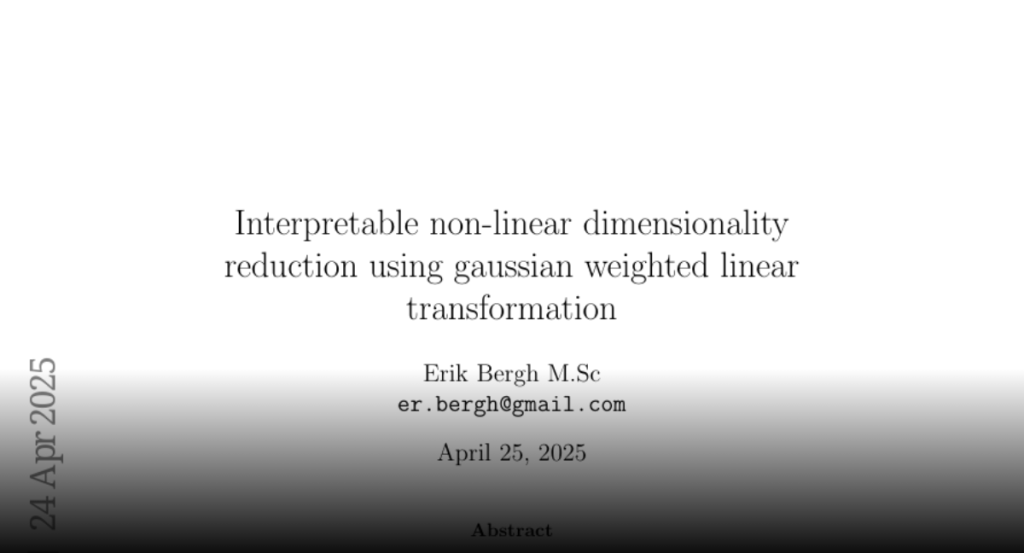Dimensionality reduction techniques are fundamental for analyzing and
visualizing high-dimensional data. With established methods like t-SNE and PCA
presenting a trade-off between representational power and interpretability.
This paper introduces a novel approach that bridges this gap by combining the
interpretability of linear methods with the expressiveness of non-linear
transformations. The proposed algorithm constructs a non-linear mapping between
high-dimensional and low-dimensional spaces through a combination of linear
transformations, each weighted by Gaussian functions. This architecture enables
complex non-linear transformations while preserving the interpretability
advantages of linear methods, as each transformation can be analyzed
independently. The resulting model provides both powerful dimensionality
reduction and transparent insights into the transformed space. Techniques for
interpreting the learned transformations are presented, including methods for
identifying suppressed dimensions and how space is expanded and contracted.
These tools enable practitioners to understand how the algorithm preserves and
modifies geometric relationships during dimensionality reduction. To ensure the
practical utility of this algorithm, the creation of user-friendly software
packages is emphasized, facilitating its adoption in both academia and
industry.

